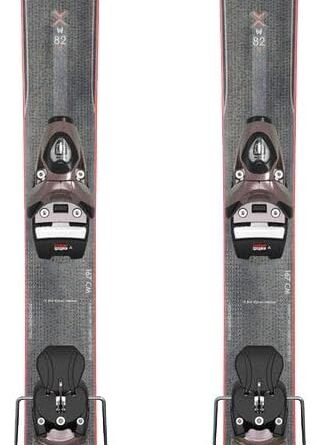
Whether you’re a seasoned wakeboarder or just starting out, selecting the perfect wakeboard handle for wake park obstacles can make all the difference in your performance and enjoyment on the water. With so many options available, it can be overwhelming to decide which handle is best suited for you. This guide will walk you through everything you need to know about choosing the right size and style of wakeboard handle, ensuring that you’re equipped with the perfect tool to conquer any wake park obstacle that comes your way. So grab your board and get ready to take your wakeboarding skills to the next level!
Consider the Handle Material
When choosing a wakeboard handle for wake park obstacles, one of the first factors to consider is the handle material. The two main options to choose from are EVA or rubber grips. EVA grips tend to be softer and more comfortable to hold, providing a cushioned feel. On the other hand, rubber grips offer a firmer grip, which can be beneficial for riders who prefer a more secure hold on the handle.
Another aspect to consider is the material of the main handle. Handles made of aluminum or carbon fiber are known for their durability and lightweight properties. These materials are able to withstand the rigors of wake park obstacles while still providing a comfortable grip. Alternatively, handles made of plastic or fiberglass are less expensive options that still offer decent performance.
Evaluate the Handle Grip
When it comes to evaluating the handle grip, there are several factors to consider. The grip diameter is an important aspect to assess, as it can greatly influence your comfort and control while riding. Thicker grips can provide a more secure hold, but they may not be suitable for riders with smaller hands. On the other hand, thinner grips offer better maneuverability but may not provide the same level of comfort.
Another consideration is whether to choose single or double-density grips. Single-density grips have a consistent firmness throughout, while double-density grips have a softer outer layer and a firmer inner layer. Double-density grips are often favored by riders who value the combination of comfort and control.
The grip texture is another factor to evaluate. Some handles feature a smooth texture, while others have ridges or patterns that offer additional grip. It’s important to choose a texture that feels comfortable and secure to hold, especially when taking on wake park obstacles that require intense maneuvers.
Lastly, the grip length should be taken into account. Longer grips provide more options for hand placement, allowing riders to adjust their grip depending on the trick or obstacle they’re tackling. Shorter grips, on the other hand, offer a more compact and agile feel. Consider your personal preference and riding style when determining the ideal grip length for your wakeboard handle.

This image is property of images.pexels.com.
Analyze the Handle Length
The handle length is another crucial factor to consider when selecting a wakeboard handle for wake park obstacles. The right handle length can greatly impact your performance and comfort on the water.
Firstly, consider your riding style. If you find yourself primarily hitting rails and obstacles, a shorter handle may be more suitable. A shorter handle allows for more precise control and maneuverability when navigating tight turns and obstacles.
On the other hand, if you prefer more aerial tricks and jumps, a longer handle may be beneficial. A longer handle provides greater leverage and stability, which can be advantageous for executing spins and flips in the air.
Additionally, your height should also be taken into account when determining the ideal handle length. Taller riders generally require longer handles to accommodate their reach, while shorter riders may find shorter handles more comfortable.
Ultimately, finding the right handle length is a matter of personal preference and experimentation. Consider your riding style, height, and comfort level to determine the handle length that works best for you.
Evaluate the Handle Bar
When it comes to the handle bar design, there are two main options to choose from: T-bar or Y-bar designs.
T-bar handles consist of a single straight bar, resembling the letter “T”. This design offers simplicity and a traditional feel, making it a popular choice among riders. T-bar handles provide a balanced grip and allow for easy hand transitions during tricks and maneuvers.
Y-bar handles, on the other hand, feature a central stem with two separate arms, resembling the letter “Y”. This design offers a wider grip and can provide additional leverage and control, particularly during powerful maneuvers. Y-bar handles are favored by riders who prefer a more aggressive and locked-in feel.
Another consideration when choosing a handle bar is the T-bar angle. Some handles allow for adjustment of the T-bar angle, allowing riders to customize their grip based on their specific tricks and preferences. Experiment with different angles to find the one that feels most comfortable and natural for your riding style.
The stiffness and durability of the handle bar should also be evaluated. Look for handles that are made of high-quality materials and have a sturdy construction. Handles that are too flexible may negatively impact your control and precision on the water, while handles that are too stiff can result in discomfort or strain on your wrists. Strike a balance between flexibility and stiffness to find a handle bar that suits your needs.

This image is property of images.pexels.com.
Assess Handle Flex
Handle flex refers to the amount of bend or flex in the handle when pressure is applied. This factor can greatly impact your performance, especially when tackling wake park obstacles.
Consider the amount of flex in the handle. Handles with more flex offer a spring-like effect, which can enhance your pop off the wake and provide a more forgiving feel when landing tricks. This can be particularly advantageous when hitting ramps and obstacles that require takeoffs and landings with precision.
Additionally, handle flex can also contribute to shock absorption. A handle with a moderate amount of flex can help absorb impacts and vibrations when landing hard or encountering rough water conditions. This can reduce strain on your wrists and arms, allowing for a more comfortable and enjoyable riding experience.
However, it’s important to note that excessive flex can negatively affect your control and stability. Evaluate the trade-off between flex and control based on your personal preferences and the specific wake park obstacles you plan to tackle.
Review Handle Weight
The weight of the handle is another important consideration when selecting the perfect wakeboard handle for wake park obstacles. The handle weight can affect your trick execution and overall comfort while riding.
Consider the weight of the handle in relation to the tricks you plan to perform. Heavier handles can provide more stability and control, making them suitable for riders who prioritize consistency and precision. On the other hand, lighter handles offer increased agility and maneuverability, which can be beneficial for riders who focus on technical tricks and spins.
It’s also crucial to evaluate your level of comfort with different handle weights. Some riders may prefer a slightly heavier handle as it can help them maintain better balance and stability. Others may find a lighter handle more comfortable, especially during prolonged riding sessions or when executing quick and repetitive maneuvers.
Ultimately, the right handle weight will depend on your personal preference and the type of riding you enjoy most. Consider experimenting with different handle weights to find the one that feels most natural and comfortable for you.

This image is property of images.pexels.com.
Examine Handle Floatation
Handle floatation refers to the handle’s ability to stay afloat in the water. This factor is particularly important when riding in wake park settings, where falls and drops into the water are common.
Assess the need for handle floatation based on the type of wake park obstacles you plan to tackle. If your riding style involves frequent falls into the water, such as when hitting ramps or rails, handle floatation becomes crucial. A handle that floats will be easier to retrieve and less likely to become tangled or caught underwater.
Additionally, consider the importance of buoyancy during falls. A handle with good floatation can help keep your arms and hands above the water, reducing the risk of injury and making it easier to regain control and prepare for your next move.
When selecting a handle for wake park obstacles, it’s recommended to choose handles specifically designed for floatation. These handles are often constructed with buoyant materials or feature foam-filled cores to ensure optimal floatation and water resistance.
Choose the Handle Bar Width
The handle bar width is an important factor to consider when selecting a wakeboard handle for wake park obstacles. The right handle bar width can greatly impact your maneuverability and control while riding.
Consider the handle bar width in relation to the specific wake park obstacles you plan to tackle. If you primarily ride in tight spaces or navigate through narrow rail structures, a narrower handle bar width may be more suitable. A narrower handle provides better maneuverability and allows for quicker transitions between tricks and obstacles.
On the other hand, if you’re attempting larger jumps or want more stability during spins and rotations, a wider handle bar width may be beneficial. A wider handle offers increased leverage and stability, providing a secure grip when executing powerful maneuvers.
When determining the ideal handle bar width, personal preference and riding style play a significant role. Experiment with different handle bar widths to find the one that feels most comfortable and natural for your style of riding.
Determine the Handle’s Durability
Durability is a crucial factor to consider when selecting a wakeboard handle for wake park obstacles. Wake park riding often involves intense impact with rails, ramps, and other obstacles, requiring a handle that can withstand the rigors of such maneuvers.
Evaluate the material strength and construction of the handle. Handles made of aluminum or carbon fiber are known for their durability and ability to withstand heavy use. These materials are resistant to impact and provide excellent strength-to-weight ratios, ensuring your handle can withstand the demands of wake park riding.
Handles made of plastic or fiberglass are generally more affordable options but may not offer the same level of durability as their higher-end counterparts. If you’re a beginner or occasional rider, these materials may still provide adequate performance and durability for your needs.
Consider the reliability and lifespan of the handle as well. Look for handles that have a reputation for durability and long-lasting performance. User reviews and recommendations can be valuable resources when assessing the durability of a handle.
Consider the Handle’s Aesthetics
While functionality and performance are crucial, the aesthetics of the handle should not be overlooked. The handle serves as an extension of your personal style and can add a touch of personality to your wakeboarding setup.
Evaluate the visual appeal and design of the handle. Some handles feature vibrant colors and eye-catching patterns, while others have more subtle and minimalist designs. Choose a handle that matches your personal style and complements the overall look of your wakeboard and other gear.
Additionally, consider any additional features or customizations that may enhance the handle’s aesthetics. Some handles offer customizable grip options, allowing you to choose from a variety of colors and textures. Others may have unique graphics or branding that adds an extra level of style to your setup.
Remember, the handle is an accessory that reflects your personal taste and identity on the water. Don’t be afraid to choose a handle that not only performs well but also resonates with your own unique style.
In conclusion, selecting the perfect wakeboard handle for wake park obstacles involves carefully considering various factors. From the handle material and grip to the handle length and aesthetics, each aspect plays a significant role in determining your comfort, control, and performance on the water. By evaluating your personal preferences, riding style, and the specific demands of wake park obstacles, you can find a handle that meets your needs and enhances your wakeboarding experience. So go ahead, take your time, and choose the wakeboard handle that will help you conquer those wake park obstacles with confidence and style. Happy riding!






